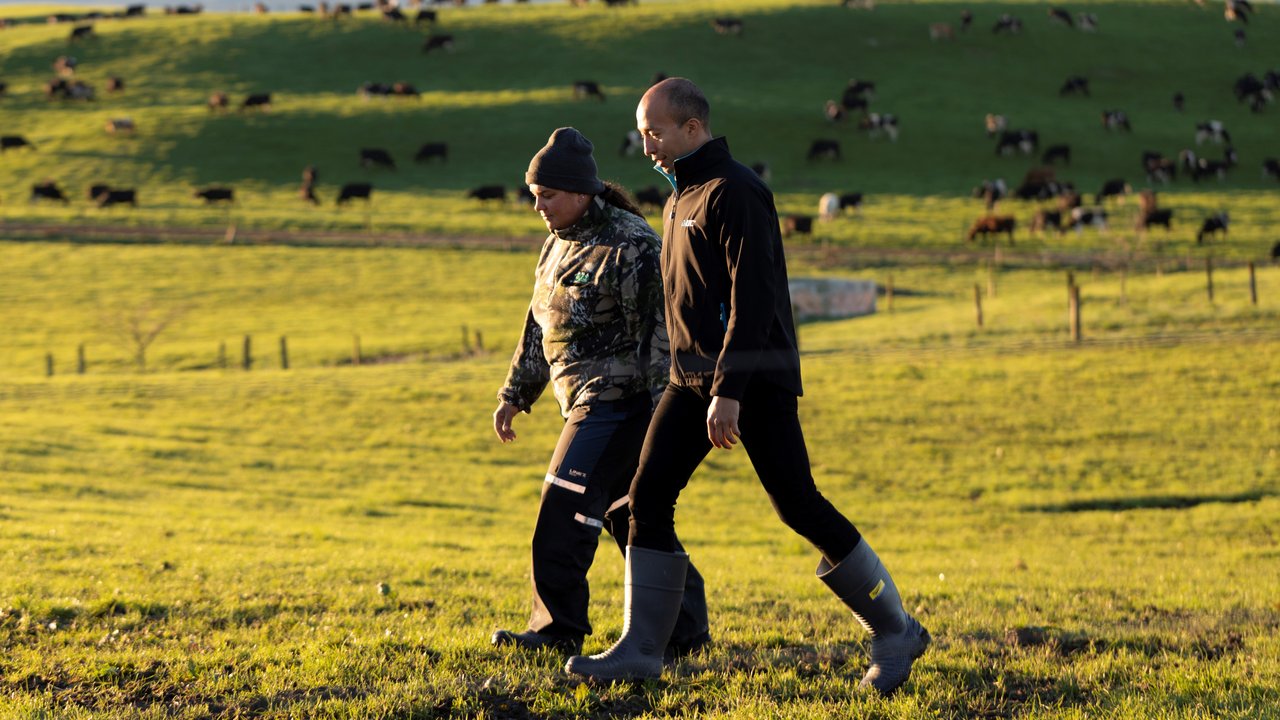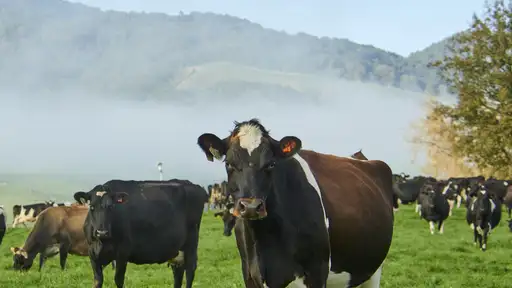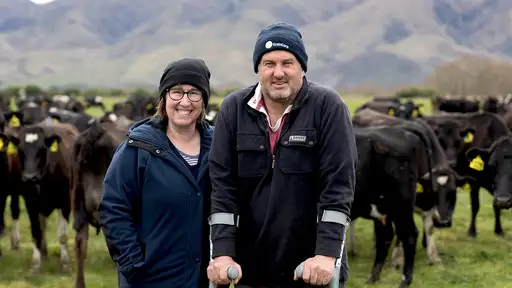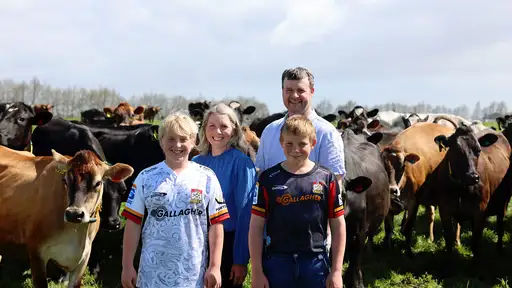Every year, come June, we get an insight into what the previous season’s national and regional reproductive performance was and whether we as an industry have increased the in-calf rate to improve the profitability, efficiency and sustainability of our national dairy herd. As a general trend of the last 14 years, reproduction numbers haven’t changed significantly at a macro level, despite reports of high variation both positive and negative at an individual farm level.
Last spring brought a drop in the 6 week in-calf rate of 0.8% and an increase in not in-calf rate of 0.5% nationally. These rates were predominately found in the North Island while the South Island kept reproduction performance the same as the previous season. This helped keep the national performance drop at a more manageable level.
A combination of a tough autumn which had farmers struggling to reach calving Body Condition Score (BCS) targets and a wet spring affected not only production, but also reproductive performance. The alarm bells started ringing when submission rates were running behind those of the 2021/22 season. The feedback I was receiving was that vets were busier than usual treating non-cycling cows and despite that we were still seeing a drop in submission rates. What would be causing this? Given the indication that production was behind earlier in the season it is hard not to think that there was an energy deficit happening with most cows. Again, the wet weather and lack of sunshine hours is bound to have affected pasture one way or another and the consequence was that cows seem to have had less energy available to them and simply couldn’t perform.
This lends me to think about what this season will bring us. I heard a lot of farmers milking cows longer to make the most of the additional pasture they eventually grew. This also saw us, as an industry, catch up in the early milk production loss to save the season and add a bit more cash flow to the business.

"With cows not quite on BCS targets, soils at a high moisture level, and pasture growth slowing down, it is important that farmers think carefully about what they have at hand."
Senior Reproduction Solutions Advisor, Jair Mandriaza
The risk with this is that the additional weeks of milking may have compromised reaching calving BCS targets. I heard it more than once how hard it was to put BCS on cows this autumn/winter. Being as wet as it has been certainly hasn’t helped. With the 2024 season in mind, one thing to consider for this coming summer/autumn is to manage rising 3-year-old’s separately to mixed aged cows, as these animals require an extra 0.5 BCS at calving. This will ensure a good productive and reproductive performance of this age group the following season.
With cows not quite on BCS targets, soils at a high moisture level, and pasture growth slowing down, it is important that farmers think carefully about what they have at hand.
Sometimes tough challenges are thrown at us, but here are some tips or options for those that feel they could be facing a challenging time ahead with reproduction.
With many farms already started calving in the northern most areas of the country, what can be done now?
Improving BCS of the herd is not an option for most farmers. So having a good assessment of the herd’s actual state of play as far as BCS is concerned is a good starting point to help with decision making. If there are groups of cows below BCS targets, it will be important to come up with a preferential treatment plan to help them ride the gap once they start milking again.
From then on, it will be about nailing the transition management period.
Farmers are making good use of Once-a-Day (OAD) in the first few days post-calving to ease cows back into milking life. This is commonly used by farmers who have collars and monitor rumination rates as a decision-making point to transition cows onto Twice-a-Day (TAD). Some farmers who don’t have collars keep cows on OAD for 7-10 days to achieve similar results. Most farmers who use this management tool don’t report massive drops in milk yield and talk about “happy cows”. It is also important to note that OAD is not only good for cows, but also takes the pressure off the farm team at a time when there are a lot of different tasks that need to be done.
Keeping the focus on transition management, it may be worth reviewing how the different calving groups (Early, Medium, Late and Very Late) performed in 2022. This can give you an indication of specific times when things didn’t go as well as planned.
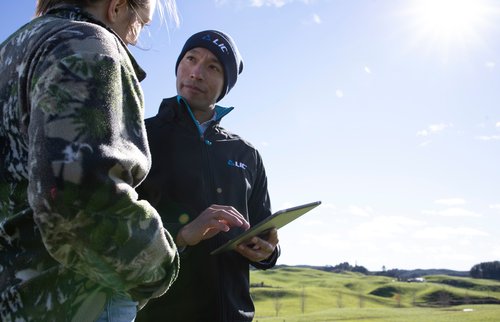
What we expect based on the 2022 stats is that early calvers have a 10% higher 6 week in-calf rate than medium calvers. Those medium calvers then have a 13 % better 6 week in-calf rate than the late calving cows, which have a 17% better 6 week in-calf rate than the very late calvers. If the numbers on your farm are looking lower, I suggest you focus on the group that didn’t perform as expected. Good transition management will also help to have fewer cows experiencing metabolic issues.
The next challenge will be to minimise BCS loss between calving and mating.
There is a balancing act between trying to make your cows peak as high as they can, while offering them enough energy so that they do not lose more than 1 BCS between calving and mating (assuming they were on target to begin with). At this point, a good indicator on how well things are going may be a comparison on how the year-to-date milk production is compared to 2021 season. We know that 2022 was challenging for a large proportion of farmers in early lactation, so being comparable to it is not necessarily a good sign.
I cannot emphasise enough how important it is to look at the reproduction data for the 2022 season to identify areas of opportunity. If there is a specific group of cows that underperformed, that will help you target those animals this season to address the shortcomings. For example, strategic use of OAD in such groups may well be a good tool at your disposal, as long as it is implemented at least 3 weeks before mating start date so that the benefits of OAD can be expressed by the animals. Some cows won’t deal well with being milked OAD so some fluidity here is necessary.
Next step is the pre-mating period. Measuring the proportion of your herd that is cycling before mating start date will give you an early opportunity at intervening should that number be alarmingly behind target. At least 75% of cows should be cycling 10 days before mating start date and 85% by mating start date . If these numbers are not met, chances of achieving submission rate targets are diminished. Chemical intervention is an option, as well as proactive targeted use of OAD.
Meeting submission rates is important as this is one of the two main drivers of 6 week in-calf rate alongside conception rate. Ensuring you and your team are up to date with heat detection best practice is important. The last thing you want to do is execute everything right, get your cows cycling, and then not identify them on heat at the right time.
What we have seen in the national data is that conception rates are higher in the first 3-4 weeks of mating and after that they decrease as the weeks of mating go by. My take on this is that in the early part of mating we have lots of good quality grass available for cows to eat and the energy balance is there for them to produce and reproduce well. We then hit the inevitable drop in production when the herd leaves the plateau of peak production and starts to decline. The cow is trying to look after herself by cutting back on production, and a drop in milk production is known to affect the ability of cows to get in-calf. Some of the factors that influence this drop are mostly to do with falling ME intake which means there is less energy available for cows to produce and reproduce.
The reality is that the environment for cows to try and get in-calf in the beginning of mating is vastly different to later in the season which will help explain a good part of the drop in conception rates. People may say that the most fertile cows get in-calf early, however we do see very good operators being able to maintain very high conception rates throughout mating period.
So, with this in mind here are a few lasting thoughts that I would urge you to take into consideration:
- Know where your herd is at from a BCS point of view and think about what you can do to help the cows that are not quite where they should be.
- Be proactive in understanding where the shortcomings were in the spring 2022 season and make changes if possible. Doing the same thing repeatedly will bring you similar results year on year.
- Maximise getting cows in-calf early. For the majority of farmers, it will get tougher to get cows in-calf as the mating period goes on. This is independent of whether they are using natural mating bulls or doing artificial breeding
